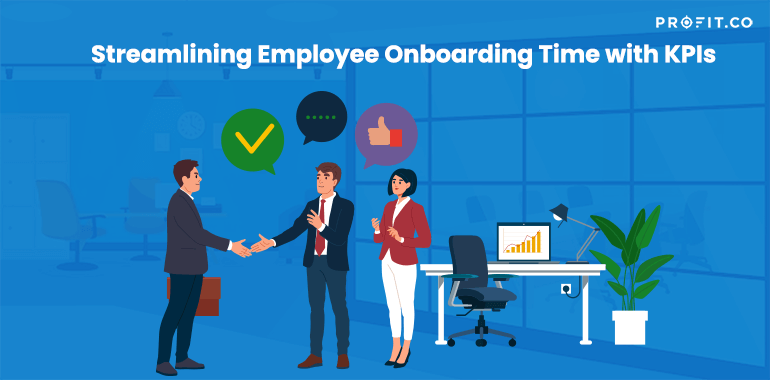Introduction
Onboarding new employees efficiently ensures a smooth transition, maximizes productivity, and fosters long-term success. Organizations that adopt a structured onboarding program have the potential to experience a significant improvement in employee retention rates, with a potential increase of 50% among newly hired individuals.
In this blog post, we will explore the concept of employee onboarding, answer some frequently asked questions, and provide a practical example of using Objectives and Key Results (OKRs) to optimize the onboarding process.
What is Employee Onboarding?
Employee onboarding is integrating and orienting new hires into an organization. It involves providing the necessary tools, resources, and information to become productive team members while aligning them with the organization’s values, goals, and culture. OKRs and employee engagement are interconnected, so providing OKRs as a framework for new employees allows them to understand their role and involvement parameters.
Ready to start your KPI journey today?
Steps In Employee Onboarding
Employee onboarding is a crucial process that helps new hires integrate into the company culture, understand their roles and responsibilities, and become productive team members. Effective onboarding sets the stage by following the essential steps for the onboarding process for a positive employee experience, reduces ramp-up time, and increases retention rates.
Pre-boarding
Before the employee’s first day, provide them with the necessary paperwork, contracts, and pre-employment tasks such as background checks or drug tests. Share important information about the company, its policies, and any required documentation they must bring on their first day.
Orientation
On the employee’s first day, greet them warmly and introduce them to the team. Provide a comprehensive orientation that covers essential information about the organization, its mission, values, and goals.
Workspace Setup
Ensure the employee’s workspace is ready, including their desk, computer, necessary software, email accounts, and any other tools they need to perform their job. Help them become familiar with the physical office layout, facilities, and amenities.
No company, Small or large, can win over the long run without energized employees who believe in the mission and understand and how to achieve it.
Networking
Facilitate introductions to colleagues, managers, and key team members. Encourage interactions and networking opportunities to help the new employee build relationships and establish a sense of belonging within the organization. Educate the new employee about the company’s culture, values, and work environment.
Role and Responsibilities
Clearly define the new employee’s role, job responsibilities, and performance expectations. Provide them with a detailed job description and any specific goals or targets they should strive to achieve.
Training and Development
Provide comprehensive training sessions to help employees acquire the skills and knowledge necessary for their role. Offer access to relevant resources, online courses, workshops, or mentorship programs to support their professional growth and development.
Regular Check-ins
Schedule regular check-ins with the employee to provide ongoing support and address any questions or concerns they may have. OKR Check-ins offer a baseline for guidance and feedback to ensure their smooth transition and assimilation into the organization.
Continuous Support
Continue supporting the employee beyond the initial onboarding phase. Regularly communicate with them to ensure their satisfaction and engagement within the organization.
Calculate the Average Time to Onboard an Employee.
- Determine the total time taken for onboarding each individual employee. This includes the time from their start date to the completion of all onboarding activities and requirements.
- Add up the onboarding times for all new employees within a specific timeframe (e.g., a month or quarter).
- Divide the total onboarding time by the number of new employees onboarded within that timeframe to calculate the average time to onboard an employee.
Customer satisfaction
Here’s an example calculation
Let’s say you onboarded 10 new employees in the last quarter, and the total onboarding time was 120 days.

Average Time to Onboard an Employee = 120 days / 10 employees
Average Time to Onboard an Employee = 12 days
In this example, the average time to onboard an employee would be 12 days. This metric can help evaluate the onboarding process’s efficiency and identify potential areas for improvement or bottlenecks that may be extending the onboarding timeline.
Some common KPIs to consider when measuring the employee onboarding process
- Time to Productivity
- Employee Retention
- Manager and Peer Feedback
- Employee Satisfaction and Engagement
- Time to Full Onboarding Completion
- Compliance and Policy Adherence
- Employee Feedback and Perception
- Onboarding Program Completion
The selection of specific KPIs may vary based on the organization’s goals, culture, and industry. It is essential to choose OKRs for successful onboarding as well as corresponding KPIs that align with the desired outcomes and continuously review and adjust them as needed to improve the employee onboarding process.
FAQs
1. How long does the average onboarding process take?
The average time to onboard an employee varies depending on the complexity of the role, the organization’s structure, and the onboarding program in place. However, studies suggest that a well-designed onboarding process typically spans anywhere from 30 to 90 days.
2. What are the critical components of a successful onboarding program?
A successful onboarding program encompasses several key components, including pre-boarding activities, comprehensive training, mentorship or buddy systems, clear performance expectations, regular check-ins, and opportunities for social integration.
3. How does effective onboarding impact employee engagement and retention?
Effective onboarding positively influences employee engagement and retention rates by creating a sense of belonging, clarifying job expectations, fostering early accomplishments, and facilitating connections with colleagues and leaders. It helps new employees feel valued and supported, increasing job satisfaction and longer organizational tenures.
OKR Examples : Streamlining Onboarding Process
Objective: Improve the efficiency of employee onboarding to enhance productivity and engagement.
Key Result 1: Reduce average onboarding time by 20% from 30%
Initiative: Implement streamlined onboarding workflows, mentoring, and knowledge transfer.
Key Result 2: Increase employee satisfaction with onboarding from n 75% to 80%
Initiative: Develop an onboarding feedback mechanism to gather employee insights.
Key Result 3: Achieve 90% completion rate of onboarding milestones
Initiative: Create a clear onboarding roadmap with defined milestones and expectations.
Conclusion
Efficiently onboarding new employees is vital to any organization’s success. By understanding the average time to onboard, addressing frequently asked questions, and leveraging the power of OKRs, companies can optimize their onboarding processes, enhance employee engagement, and achieve long-term organizational success. Streamlining the onboarding journey empowers employees to hit the ground running and contribute their best from day one.

